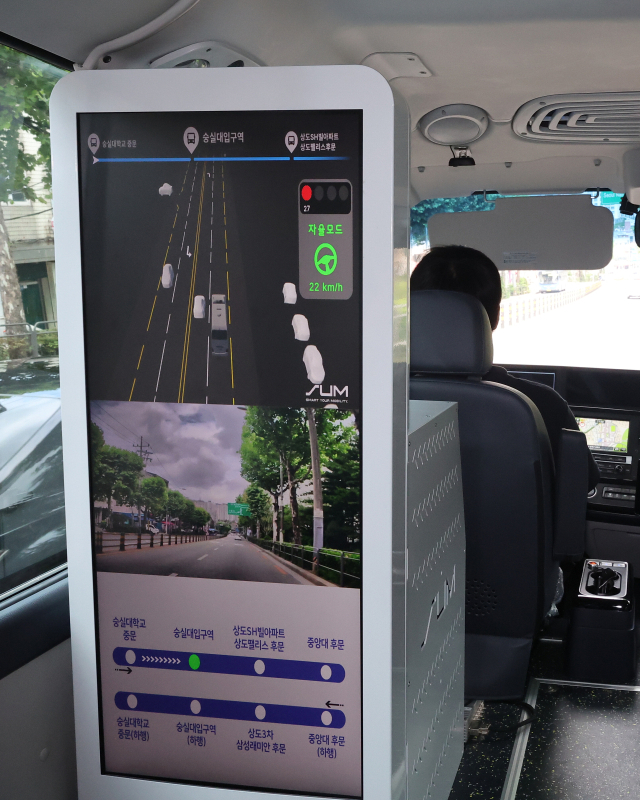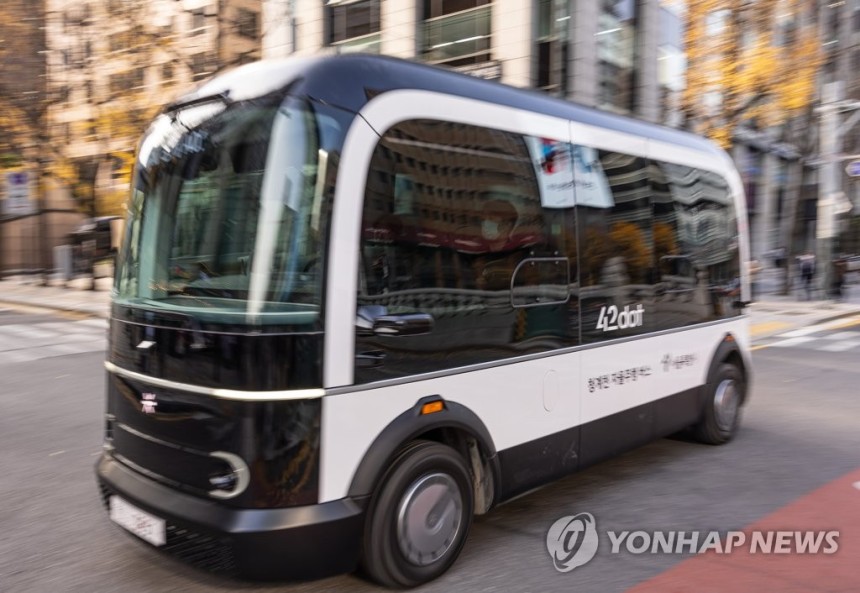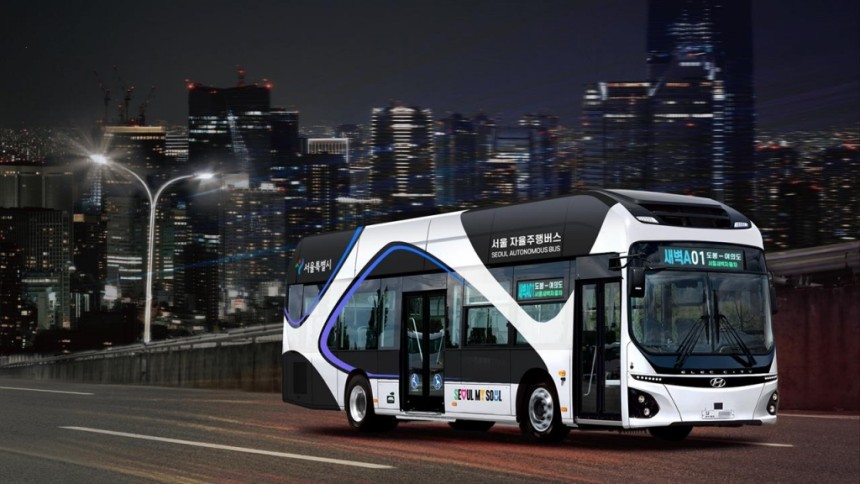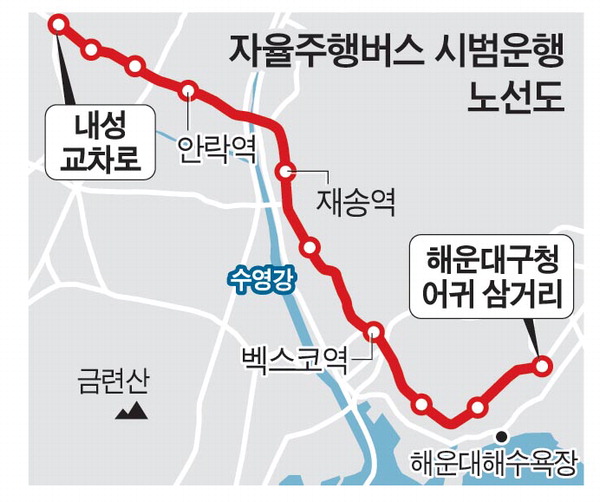Table of Contents
- A leap to become a leading city in future public transport... Autonomous buses, a signal for innovation in Busan's night traffic
- What does the autonomous driving demonstration zone within Busan's BRT mean?
- It can be experienced first at Osiria Tourist Complex
- The autonomous driving demonstration zone, the core of Busan's future mobility strategy
- Conclusion: Busan takes one step closer to becoming a 'leading city in autonomous public transport'
- Frequently Asked Questions (FAQ)
A leap to become a leading city in future public transport... Autonomous buses, a signal for innovation in Busan's night traffic

The city of Busan has been designated a 'demonstration zone for autonomous vehicles' by the Ministry of Land, Infrastructure and Transport for the 10.4km BRT section running from Daongnae Intersection in Dongnae-gu to Haeundae District Office Intersection.
This designation allows Busan to begin a practical project applying autonomous driving technology to public transport. Particularly, starting in 2026, late-night autonomous buses are expected to be officially operated, raising anticipation.
What does the autonomous driving demonstration zone within Busan's BRT mean?

Busan has an important opportunity to develop as a 'future public transport city.' In particular, the current BRT section is already equipped with infrastructure suitable for autonomous driving, including dedicated bus lanes. Additionally, the close proximity to urban rail and existing late-night bus routes is expected to create significant synergy with autonomous public transport. These factors combine to enhance the likelihood of further progress in Busan's public transport environment.

The autonomous buses will apply level 3 autonomous driving technology. These buses will operate with a test driver on board to assist in safety. They can accommodate up to 15 passengers and will switch to manual driving in certain urban segments to enhance safety.
It can be experienced first at Osiria Tourist Complex

Before the official operation of the Daongnae-Jung-dong BRT section, Busan plans to start the trial operation of autonomous buses at Osiria Tourist Complex from September 2025. A launch ceremony will take place in July, with plans to gradually introduce a total of 4 autonomous buses.
This section is a heavily visited area with smooth vehicle flow, providing citizens and tourists a great opportunity to experience autonomous public transport. This trial operation is expected to positively impact the public's perception of autonomous driving technology and increase acceptance of this technology.
The autonomous driving demonstration zone, the core of Busan's future mobility strategy

Through the designation of an autonomous driving service demonstration zone, Busan plans to ensure that it can establish itself as a practical public transport option beyond mere technical verification. A two-month trial test operation will take place from November to December, during which the stability of the technology and the appropriateness of the routes will be thoroughly reviewed.
The Mayor of Busan emphasized, "To grow Busan as a future mobility hub of Korea, we will gradually expand the autonomous driving service according to regions and time zones." He added, "We aim to create a city where all citizens can easily use public transport anytime, anywhere."
This project is expected to bring about innovative changes to the city's transportation system rather than being a simple technology introduction. Furthermore, based on successful models, there seems to be a high possibility of expansion to other regions. Thus, it is anticipated that Busan's autonomous driving service will find ways to contribute to the local community.
Conclusion: Busan takes one step closer to becoming a 'leading city in autonomous public transport'

The designation of the autonomous driving demonstration zone by Busan is not merely about testing technology. It significantly represents a move towards closely integrated services in daily life, addressing the gap in traffic during late-night hours and providing citizens with various experiential opportunities.
In the future, efforts will continue to lay the groundwork for the commercialization of fully autonomous driving technology above level 4 and to realize Busan as a smart mobility city.
#BusanBRT, #autonomousbus, #autonomousdemonstrationzone, #DaongnaeJungdongBRT, #HaeundaeDistrictOffice, #DongnaeGu, #BusanPublicTransport, #LateNightBus, #BRTBus, #SmartMobility, #AutonomousDrivingTechnology, #Level3AutonomousDriving, #BusanAutonomousDriving, #OsiriaAutonomousBus, #BusanTransportationInnovation, #FuturePublicTransport, #BusanNightBus, #AutonomousDrivingService, #BusanMayorParkHyungjun, #BRTAutonomousOperation, #BusanUrbanTransport, #BRTBusRoute, #BusanTransportationPolicy, #BRTLateNightOperation, #BusanCityNews, #BusanITPolicy, #BusanInnovationCity, #AutonomousBusExperience, #AutonomousPublicTransportation, #BusanFutureCity
Frequently Asked Questions (FAQ)
Q. What section has been designated by Busan as an autonomous vehicle demonstration zone?
Busan designated the 10.4km BRT section from Daongnae Intersection to Haeundae District Office Intersection as a demonstration zone.
Busan has officially been designated by the Ministry of Land, Infrastructure and Transport as an autonomous vehicle demonstration zone for the 10.4km BRT section from Daongnae Intersection in Dongnae-gu to Haeundae District Office Intersection. This section already has dedicated bus lane infrastructure suitable for autonomous driving, and its proximity to urban rail and late-night bus routes is expected to yield significant synergy with public transport connections.
Q. What is the technology level of the autonomous bus in Busan and how does it operate?
The Busan autonomous bus operates with level 3 autonomous driving technology, with a test driver on board.
The autonomous buses introduced by Busan utilize level 3 autonomous driving technology, accommodating up to 15 passengers. A test driver is on board to assist with safety, and the bus switches to manual driving in specific urban areas where safety is required. This is designed to ensure both safety and convenience.
Q. What are the plans and expected effects for late-night operation of autonomous buses?
From 2026, it will operate 3 times a week during late-night hours from 11 PM to 2 AM, addressing the gap in late-night public transport.
Busan plans to operate autonomous buses from 11 PM to 2 AM, three times a week, in the Daongnae-Jungdong BRT section starting in 2026. This operation is expected to address the lack of late-night public transport services, reduce traffic blind spots, and expand mobility rights for transportation vulnerable groups.
Q. Where can the autonomous bus demonstration be experienced first in Busan?
Trial operations will begin at Osiria Tourist Complex from September 2025.
Before full operations, Busan is preparing to begin trial operations of the autonomous bus at Osiria Tourist Complex from September 2025. A launch ceremony in July will see 4 autonomous buses gradually introduced, providing great opportunities for tourists and citizens to experience autonomous public transport. This is expected to positively influence the public's awareness and trust in autonomous driving technology.
Q. What is the ultimate goal Busan aims to achieve through the designation of the autonomous driving demonstration zone?
Busan aims to establish autonomous services as a closely integrated part of public transport, targeting future mobility hub status.
The designation of the autonomous driving demonstration zone goes beyond simple technology verification to focus on bridging late-night traffic gaps and enhancing citizen services. Based on the results of the trial operation, Busan will review the stability of the technology and the appropriateness of the routes while gradually expanding services to different regions and time zones. Ultimately, the aim is to prepare for the commercialization of fully autonomous driving at level 4 or higher, contributing to realizing Busan as a smart mobility city.